Apple iMac 27in (2012) Review
Apple iMac 27in (2012)
Is the latest large iMac as special as its slim sides would suggest?
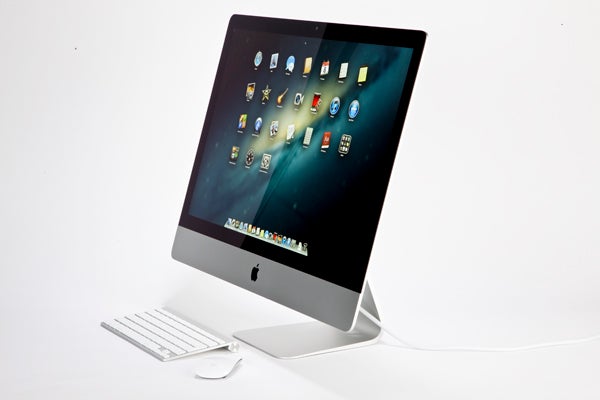
Sections
- Page 1 Apple iMac 27in (2012) Review
- Page 2 Peripherals, Screen and Speakers Review
- Page 3 Performance and Verdict Review
Verdict
Key Specifications
- Review Price: £1499.00
Introduction
Apple’s latest iMac range are hands down the nicest looking PCs currently on the market. But, with the 21in Apple iMac 2012 we found it lacked the performance to match its price, making it almost entirely a luxury purchase. So, equipped with more powerful components, can the larger 27in model do a little more to justify its even higher starting price?
Apple iMac 27in (2012) Design
We’ve said it once here and we’ll say it again: the 2012 iMac range are hands down the nicest looking PCs currently on the market. There really isn’t anything that can touch them. And, yes, a lot of it does come down to those seemingly gimmicky slim edges. 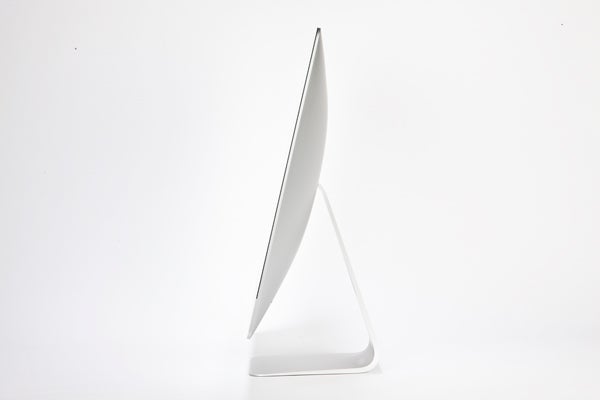
All the way round this machine its edges are just 5mm thick, making the whole machine look as though it’s almost magically slender. Peer all the way round the back and the trick is revealed; Apple has squished all the innards into a bulge in the centre of the back. But, trick though this is, the finesse with which Apple has done it – from ensuring all those edges are the same width to using a very gentle slope that rises from those sides to the middle – means it still looks astonishing from every angle.
Of course the other reason for it looking so good is Apple’s use of premium materials and its eye for the little touches. Take the metal panel that runs along the bottom of the screen, for instance. This is welded in such a way that it’s ni-on impossible to tell that it and the whole back weren’t milled from a single piece of aluminium. 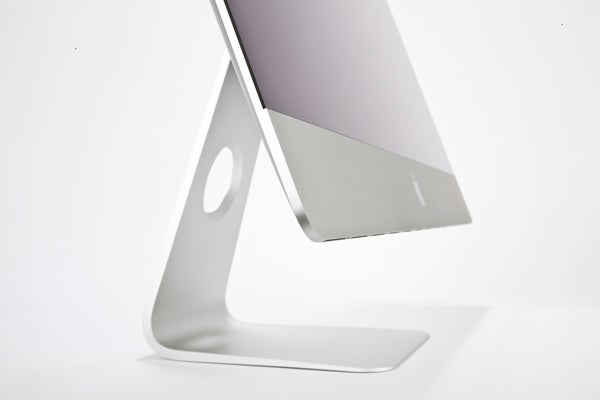
Likewise the hinge on the stand is perfectly balanced. All that’s required to tilt it back or forward is a gentle prod with one finger. There’s no need to steady the base with one hand or pull the other side while pushing the other; it just glides effortlessly.
However, the design isn’t without its problems. Just as with the 21in version, that stand offers no height adjustment so either particularly short or tall users may have to resort to some intriguing solutions to get the display at a comfortable height. Neither can the display pivot (i.e. flip round into portrait mode) nor rotate left and right. These aren’t anywhere near as major problems as the lack of height adjustment – especially as the base is slippery enough that it’s easy enough to slide the whole machine around to rotate it – but they’re features plenty of high-end monitors have. Plus, many all-in-one PCs offer the ability to fold the display flat, though this is primarily to take advantage of the touchscreens they also have.
Apple iMac 27in (2012) – Connectivity
The other problem that’s shared with the smaller 21in iMac is that of connectivity. For a start, all the ports and sockets face directly out the back of the machine. This makes them look good, as they’re both out of sight and lead cables directly to the back of your desk, but it also means they’re a pig to find. If you regularly use USB memory sticks, portable hard drives, SD cards or have multiple peripherals such as audio equipment that frequently need to be plugged in and out, having to constantly fumble around the back is quite a pain – when spending £1500 on a computer you shouldn’t, to stop you being driven insane, have to buy a USB hub/memory card reader.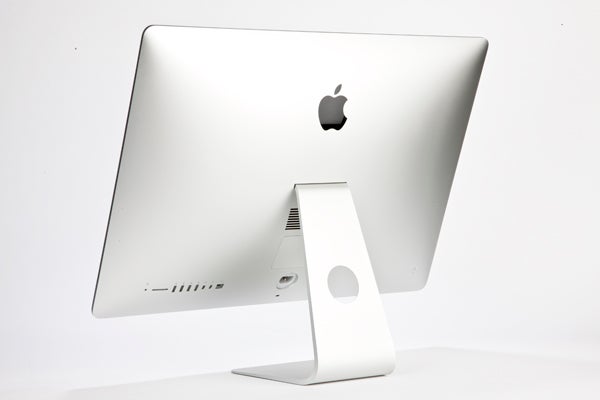
The connectivity options are also a little limiting when it comes to the ports on offer. Four USB ports is not a lot by today’s standards while the lack of a normal HDMI output means connecting up a telly or extra monitor requires an extra adapter (unless you opt for Apple’s matching Thunderbolt monitor).
The options for plugging in other devices and using the iMac as a monitor are also very limited. Using a mini DisplayPort cable you can connect to PCs with DisplayPort outputs. This will switch the iMac into Target Display mode and output the signal from your PC. We’re still looking into exactly what other devices are supported in this way so will update the review accordingly. However, what we do know is that there are no controls for switching inputs so you have to turn off or unplug your other device to switch back to the iMac. Also, there are no options for adjusting monitor settings and with no other forms of input, such as VGA or component, your options are still somewhat limited.
So if space is tight and you fancy the idea of having all you games consoles or AV boxes all running through the single screen of your iMac, depending on your setup it will either be impossible or slightly clunky. Admittedly, most all-in-one alternatives also offer limited connectivity (with only seperate monitors really offering a comprehensive range) but many include a normal HDMI socket which will support many consoles and AV devices without the need for any other adapters.
You also miss out on a proper microphone socket, though the headphone socket will accept Apple’s iPhone headset and support the microphone on that.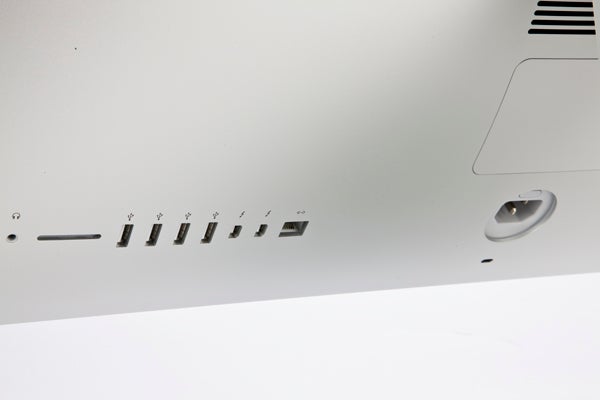
What you do get are two Thundebolt ports, which are lightning-fast connectors that can be converted to connect to just about anything – an extra monitor, an external hard drive, etc. There’s also an Ethernet port (along with built-in Wi-Fi) an SD card reader and that headphone jack, which also supports optical digital output. Above the screen and hidden behind the front pane of glass is a decent quality ‘FaceTime HD’ 720p HD webcam, which includes impressive noise-cancelling microphones.

